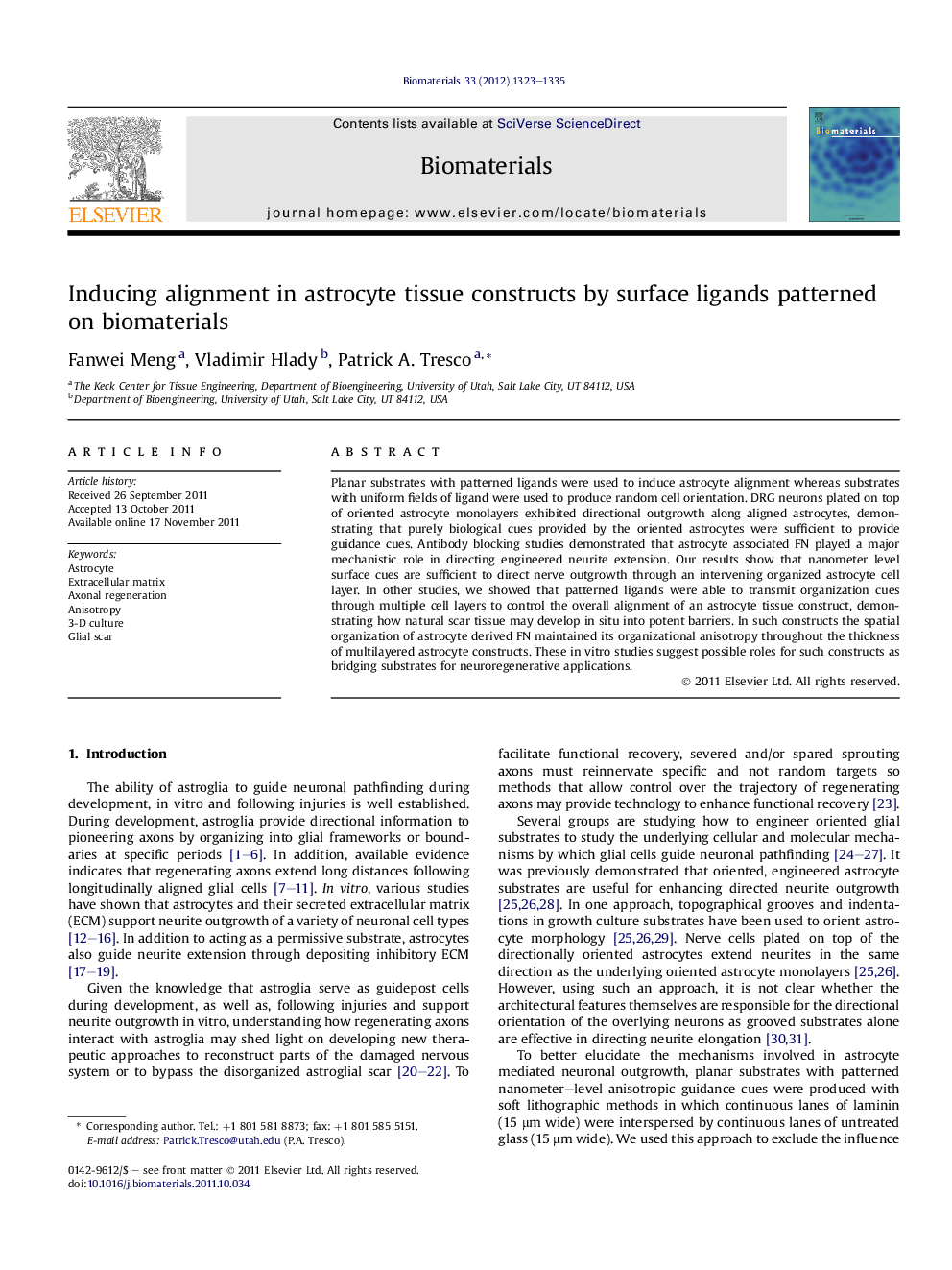| Article ID | Journal | Published Year | Pages | File Type |
|---|---|---|---|---|
| 10229802 | Biomaterials | 2012 | 13 Pages |
Abstract
Planar substrates with patterned ligands were used to induce astrocyte alignment whereas substrates with uniform fields of ligand were used to produce random cell orientation. DRG neurons plated on top of oriented astrocyte monolayers exhibited directional outgrowth along aligned astrocytes, demonstrating that purely biological cues provided by the oriented astrocytes were sufficient to provide guidance cues. Antibody blocking studies demonstrated that astrocyte associated FN played a major mechanistic role in directing engineered neurite extension. Our results show that nanometer level surface cues are sufficient to direct nerve outgrowth through an intervening organized astrocyte cell layer. In other studies, we showed that patterned ligands were able to transmit organization cues through multiple cell layers to control the overall alignment of an astrocyte tissue construct, demonstrating how natural scar tissue may develop in situ into potent barriers. In such constructs the spatial organization of astrocyte derived FN maintained its organizational anisotropy throughout the thickness of multilayered astrocyte constructs. These in vitro studies suggest possible roles for such constructs as bridging substrates for neuroregenerative applications.
Related Topics
Physical Sciences and Engineering
Chemical Engineering
Bioengineering
Authors
Fanwei Meng, Vladimir Hlady, Patrick A. Tresco,
